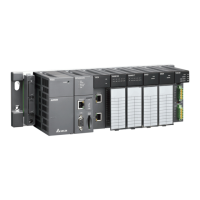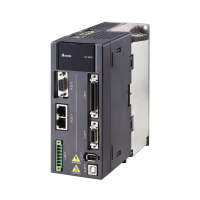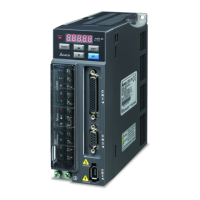Chapter 6 Applied Instructions
6-93
API
Instruction code
Operand Function
0212 FBCD P
S, D
Converting the binary floating-point
number into the decimal
Device
X Y M S T C HC D L SM SR E PR K 16# “$” DF
Pulse instruction 32-bit instruction (5 steps)
64-bit instruction
AH500 AH500 -
Symbol:
S
:
Data source Double word
D
:
Conversion result Double word
Explanation:
1. The single-precision floating-point number in the register specified by S is converted into the
decimal floating-point number, and the conversion result is stored in the register specified by
D.
2. The floating-point operation in the PLC is based on the single-precision floating-point numbers,
and the instruction FBCD is used to convert the single-precision floating-point number into the
decimal floating-point number.
3. The Flags: SM600 (zero flag), SM601 (borrow flag), and SM602 (carry flag)
When the absolute value of the conversion result is larger than the value which can be
represented by the maximum floating-point number, SM602 is ON.
When the absolute value of the conversion result is less than the value which can be
represented by the minimum floating-point number, SM601 is ON.
When the conversion result is zero, SM600 is ON.
Example:
When X0.0 is ON, the single-precision floating-point number in (D1, D0) is converted into the
decimal floating-point number, and the conversion result is stored in (D3, D2).
D 1 D 0
Binary floating-point number
Decimal floating-point number
D 3 D 2
Exponent
Real number
[D2] 10
X
[D3]
Real number: 23 bits; Exponent: 8 bits; sign: 1 bit
Mathematical form
Additional remark:
If the value in S exceeds the range of values which can be represented by the floating-point
numbers, the instruction is not executed, SM0 is ON, and the error code in SR0 is 16#2013.
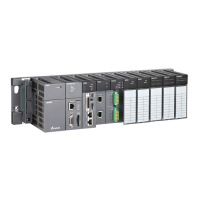
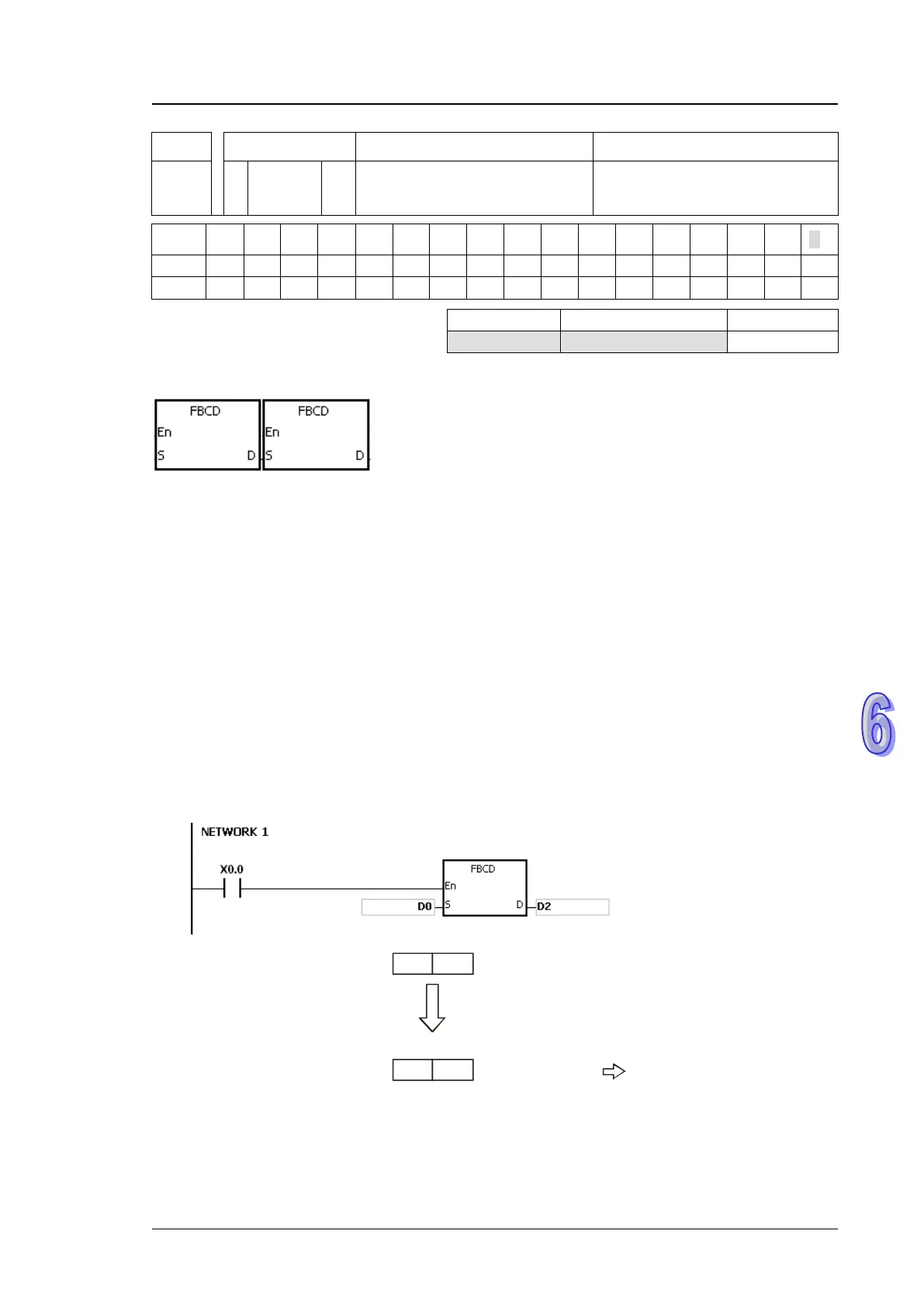